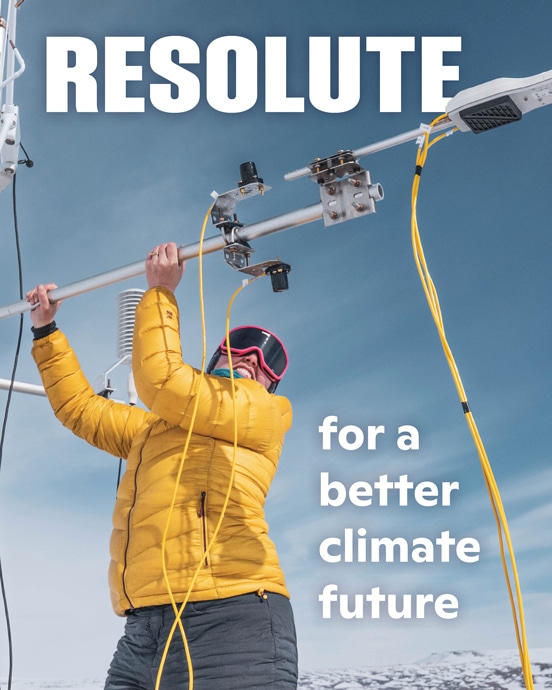Feeding Resilience: Ethiopia
Compound security, hunger, and climate risks
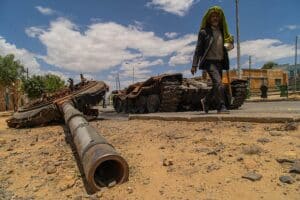
A Crossroads for Conflict, Food, and Climate
Ethiopia sits at the intersection of climate change, food security, and conflict risks that will shape the country’s internal stability, influence on East African security, and geopolitical role for years to come.
Huge danger from permafrost loss
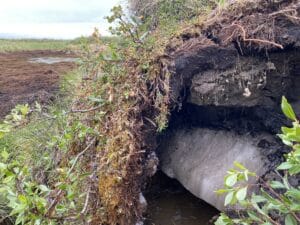
With the Arctic warming four times as fast as the rest of the globe, and fires now routinely burning large swaths of northern forests, carbon stored in permafrost is rapidly escaping into the atmosphere where it can warm the planet even faster. Edward Alexander, Senior Arctic Lead at the Woodwell Climate Research Center and a Co-Chair of the Gwich’in Council International, speaks with Host Jenni Doering about the enormous climate risks of permafrost loss and how Indigenous cultural practices can help protect this vital resource.
It is now peak hurricane season: What to expect for storms in the Atlantic
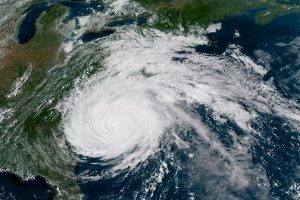
Don’t be fooled by the lack of tropical cyclones in the Atlantic Basin.
The peak of hurricane season is here, and activity could soon ramp up, despite the relative quiet currently occurring in the tropics, according to meteorologists.
Soil carbon: Crucial ally or potential threat to net-zero commitments?
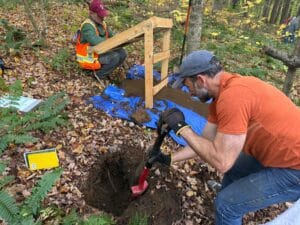
The daily destruction of nature’s carbon stores is happening right before our eyes, as forests are ravaged by catastrophic wildfires and vast tracts of wildlands are cleared for agriculture. But even greater stores of carbon lie hidden beneath our feet, and they too are under threat.
The world’s soils are a gigantic carbon sink that has so far played a vital, outsized role in mitigating humanity’s excessive carbon emissions. But climate change, industrialized agriculture and other human activities threaten to degrade global soil carbon storage — maybe dangerously so.
Preserving the ecosystem services of this subterranean environment is crucial to meeting global net zero commitments.
We now know just how much climate change supercharged Hurricane Katrina
Two decades after the devastating storm, scientists can more easily determine how much global warming is intensifying tropical cyclones.
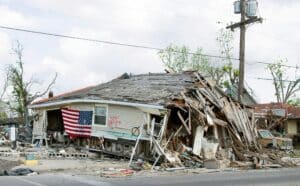
Two decades ago, Hurricane Katrina spun up like a massive atmospheric engine, using warm ocean water as fuel. Making landfall as a Category 3 storm with maximum sustained winds of 125 mph, it devastated New Orleans — surging seawater over levees, killing nearly 1,400 people, and causing more than $150 billion in damage. Even though engineers have since significantly bolstered those levees, their ability to withstand climate-supercharged cyclones remains uncertain.
An unusual sight over Canada’s Arctic: Wildfire smoke
Once rare, wildfire smoke is becoming more prevalent in Arctic communities as Canada faces harsh wildfire seasons.
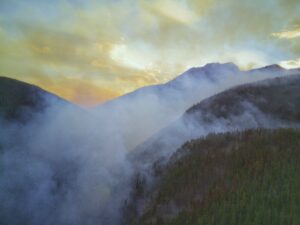
Elizabeth Mikkungwak thought the nearby garbage dump must be on fire. Acrid smoke clouded the skies over Baker Lake, a tiny Arctic hamlet and the only inland community in Nunavut, the largest in area of the three northern territories in Canada.
A safety alert issued by the authorities in the hamlet in May gave the real reason for the smoke: wildfires on the Prairies.
Read more on The New York Times.
Meeting the moment: Fund for Climate Solutions awards five new grants
From Mongolia to the Cerrado, FCS projects are tackling climate’s most pressing research questions
By Maggie Lin
The second round of 2025 Fund for Climate Solutions (FCS) awardees has been announced. The FCS advances innovative, solutions-oriented climate science through a competitive, internal, and cross-disciplinary funding process. Generous donor support has enabled us to raise more than $10 million towards the FCS, funding 79 research grants since 2018. In a volatile environment for climate research and policy, this summer’s five collaborative project teams are bringing their ambition and creativity to solutions that meet time-sensitive needs.
Additional funding will help to expand the Fund for Climate Solutions. If you are interested in learning more, contact Leslie Kolterman at lkolterman@woodwellclimate.org or (508) 444-1584.
Tracking forest structure and emissions from logging mature and old-growth forests on federal lands
Leads: Dr. Richard Birdsey, Dr. Wayne Walker, Seth Gorelik
The federal administration has ordered the Forest Service and Bureau of Land Management to increase logging of federal forests by 25% over the next few years, with detailed project-level planning expected before the end of 2025. There are few, if any, guardrails that protect the most valuable young, mature, and old-growth forests. With collaborators from Conservation Biology Institute, World Resources Institute, and Natural Resources Defense Council, this project will track carbon stock reductions from greatly scaled up logging, especially where it targets older forests. The team will also model the impacts of a 25% increase in logging across all federal lands. Their methods build upon extensive prior research, and will integrate data from satellite observations, forest inventories, and published activity reports to provide analysis that can support public engagement and policy analysis.
Mongolia grazing lands initiative: Knowledge co-production and mapping with Dukha reindeer herders in Mongolia
Leads: Greg Fiske, Christina Shintani, Jackie Dean
The Dukha people of Mongolia, like other Indigenous peoples, have lived respectfully and in harmony with the land since time immemorial. Now, their lifeways are being challenged by climate change and land use decisions made without proper consultation and consent. On the Mongolian Plateau, the rate of summertime warming is three times faster than the average for Northern Hemisphere lands, causing permafrost thaw and changes in vegetation. The project team will map land use changes impacting Indigenous grazing lands in Mongolia and train Indigenous reindeer herders in GIS map storytelling tools. Grounded in co-production of knowledge, this work will build on past successes working with Sámi reindeer herders in Norway and Indigenous communities in Alaska. It will also expand Woodwell’s rangeland work into East Asia, leveraging existing partnerships with Esri and the International Centre for Reindeer Husbandry.
A novel framework for defining and quantifying degradation in fire-prone tropical forests
Lead: Dr. Manoela Machado
Collaborators: Dr. Andréa Castanho, Dr. Marcia Macedo, Dr. Wayne Walker
Brazil’s vast tropical savanna, the Cerrado, is both a global biodiversity hotspot and a provider of vital ecosystem services. It is experiencing the highest deforestation rates among Brazilian biomes, driven primarily by the expansion of mechanized agriculture—nearly half of the Cerrado’s original vegetation is already lost. The region has weaker legal protections than the Amazon, resulting in land conversion being displaced into the Cerrado. Part of the challenge is that defining and measuring degradation in the Cerrado can’t be reduced to the loss of biomass alone: the biome is dependent on disturbances like fire that temporarily reduce biomass, but are also essential for sustaining ecological integrity. This project responds to increasingly urgent calls from government agencies, environmental nonprofits, and carbon market participants to develop an operational framework of Cerrado degradation that accounts for the ecosystem’s natural variability. This project will build Cerrado-specific definitions of degradation and deliver both a monitoring framework and a map assessing 2024 degradation. The team, including collaborators from IPAM and the University of Oxford, plans to build on these outcomes to seek funding for expanding this framework to other disturbance-dependent ecosystems, including savannas around the world.
Responsible solar geoengineering research and governance: Scoping a role for the Woodwell Climate Research Center
Lead: Dr. Peter Frumhoff
Collaborators: Dr. Jennifer Watts, Jamie Cummings, Dr. Brendan Rogers, Dr. Christopher Schwalm, David McGlinchey
Researchers and policymakers are increasingly assessing the effectiveness and risks of solar geoengineering—interventions intended to rapidly cool the Earth by reflecting a portion of incoming sunlight back into space. Woodwell Climate previously established an organizational position that “responsible research is needed to inform decision-making regarding whether and how solar geoengineering should ever be considered for deployment.” This project will investigate whether Woodwell should further responsibly-goverened solar geoengineering research, building on our strong position statement, our distinctive expertise in Arctic warming and federal policy engagement, and our relationships with Arctic Indigenous communities. The team will invite expert speakers for presentations to Woodwell staff; hold a series of scoping interviews with leading researchers, NGOs, Arctic community thought-leaders, and philanthropists; and co-convene an international workshop with the Harvard Kennedy School’s Arctic Initiative.
Understanding how wildfire impacts permafrost thaw depths
Leads: Dr. Anna Talucci, Dr. Brendan Rogers
Collaborators: Dr. Elchin Jafarov, Dr. Kayla Mathes, Dr. Christina Schädel
When high-latitude northern landscapes experience wildfire, plants and organic matter in the soil are burned away, leading to increased soil temperatures and permafrost thaw. Dr. Anna Talucci previously led a publication that synthesized existing research to drastically increase the amount of data that is available to modelers on the depth of actively thawing and re-freezing ground in burned and unburned research sites across the northern tundra and boreal regions. This project will build on that data to investigate what drives active layer recovery and fill key gaps to support permafrost modeling by Woodwell researchers. The team aims to publish their findings in a scientific journal and submit an abstract to present to colleagues at the next American Geophysical Union annual meeting. They will also develop a funding proposal to seek support in investigating the questions their research reveals about more complex permafrost-wildfire interactions.




